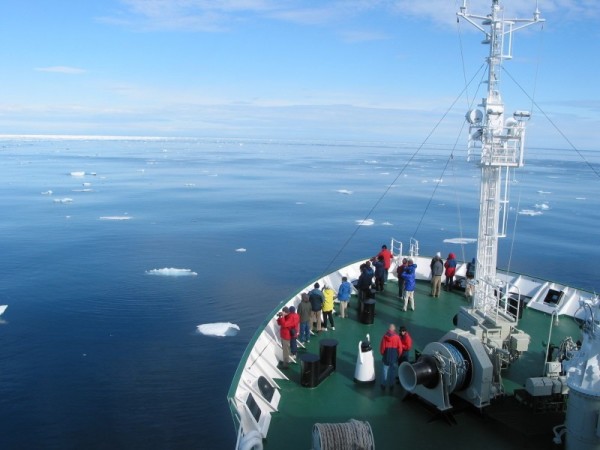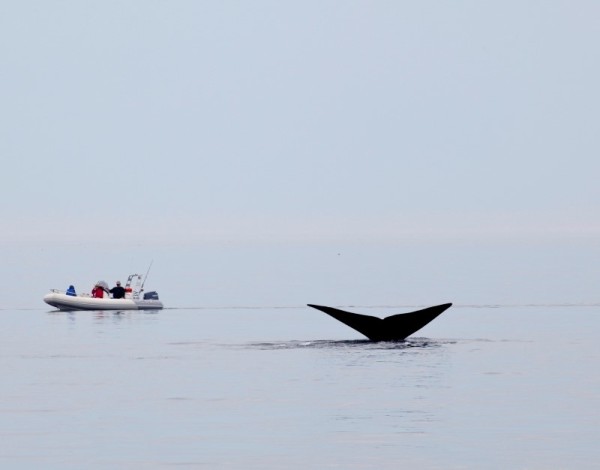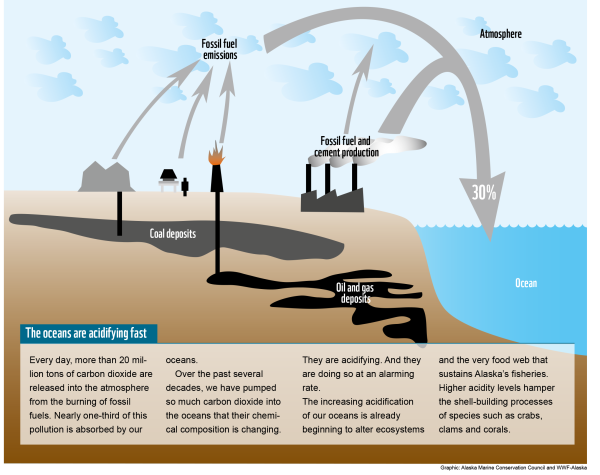Food for thought: More acidic oceans threat to marine organisms and Arctic communities
Some years ago, Rashid Sumaila, a renowned UBC professor for fisheries economics, told me that the impacts of ocean warming and acidification will be devastating – in both an ecological sense and for Inuit communities. “First, the fish swim north to get away from rising ocean temperatures. But when they get into the Arctic, they reach their graves because ocean acidification is going to decimate them; acidification is worse in the Arctic than anywhere else in Canada,” he said.

Now a new study, co-authored by Rashid, confirms exactly that: Arctic communities are vulnerable to ocean acidification. It estimates that within the next twenty years, the Beaufort Sea, off Canada’s northwest coast, could become so acidic that shellfish, fish, whales and other organisms with shells or who depend on shells will face tremendous pressure. This is worrisome for this rich but fragile ecosystem. All the more so because it will also impact many Arctic communities that depend on a healthy ocean for their livelihoods.
While acidification will hit the Arctic hard, the problem isn’t confined to our northern extremities. Other areas and industries in Canada, including the Bay of Fundy and the Pacific west coast, are also particularly vulnerable to ocean acidification both form an ecological and social point of view.
Rural Bay of Fundy communities depend on the lobster fishery (Canada’s most valuable fishery) and a lucrative scallop fishery. Lobster and scallops are calcifying organisms and as such are to be most affected.
Without durable protective housing, those shelled organisms, which are an incredibly important part of the food chain, will struggle to survive. This means that there won’t be enough food to go around for beluga whales, seals, and polar bears, to name only a few. And if they don’t have enough to eat, in some cases people won’t either. This is especially the true for remote Arctic communities that don’t have the option to diversity their livelihoods due to their dependence on a healthy environment.
Ocean acidification, which we sometimes refer to as “climate change’s evil twin,” happens when excess carbon dioxide for fossil fuels burning is absorbed in seawater. The ocean is the world’s largest carbon dioxide sink. Between 30 and 40% of the carbon dioxide we create by burning coal or, say, driving cars, dissolves into the world’s oceans as well as our many rivers and lakes. Additional confounding factors include, for example, freshwater/low salinity, temperature and upwelling.
Ocean acidification is a global, long-term problem whose ultimate solution requires carbon dioxide reduction at a scope and scale that will take decades to accomplish successfully. In Paris later this year, national governments have a chance to make commitments to address these issues. Until that is achieved, local adaptation and mitigation measures are needed to ensure the well-being of socially vulnerable coastal communities and the marine species these communities depend on. More and better marine protected areas will help increase the resilience of vulnerable ocean ecosystems. They are part of the solution, too.



